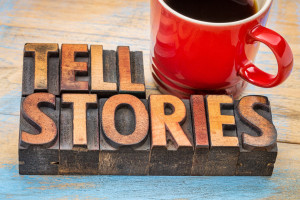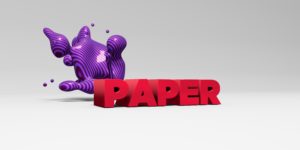 I’m a B2B content writer. I’m also a storyteller. I thought that didn’t apply to business until I realize that my favorite pieces, the ones that I enjoyed the most and that worked best for my clients, were the ones that used a narrative structure for their content branding pieces. These are the marketing pieces that tell your company and product story: the case studies, web pages, articles, and white papers that you want customers to remember.
I’m a B2B content writer. I’m also a storyteller. I thought that didn’t apply to business until I realize that my favorite pieces, the ones that I enjoyed the most and that worked best for my clients, were the ones that used a narrative structure for their content branding pieces. These are the marketing pieces that tell your company and product story: the case studies, web pages, articles, and white papers that you want customers to remember.
What Makes a Technology B2B Story?
B2B marketers don’t usually think in storytelling terms but the stories are all around you. Let’s look at some real life customer stories:
Customer Story #1. What if your customer’s story is that their backup software is jamming them up every night? The story they want to hear is about how another IT department at another company was able to install a different backup that worked right away, that integrated with their scripts, that slashed backup times from 14 hours to 14 minutes, and that let them send their older backups to the cloud. The IT department is smelling like roses. That is the story this company wants to hear. Are they going to hear it from you?
Customer Story #2. How about this story: What if an IT administrator have put in so many SharePoint systems that she can barely manage to keep them running optimally, let alone help users with advanced features? The story is that a very large investment is turning bad and people are blaming her and her team. She wants to hear a story about she can turn their problems into business gold by deploying an external storage grid, and how she can do it did it quickly with an excellent ROI. That’s a story that she and her team wants and needs to hear. Are you telling that story?
If you’re not telling stories like these then why not? IT and executives are too busy to read marketing content as an intellectual exercise. You need to persuade them, convince them that you have what they really need. Otherwise what’s the point?
You Have a Story to Tell
B2B marketing content can be dry, pompous and obscure – a deadly combination. But it doesn’t have to be, not when it’s telling a story that your customers want to hear. The result is story-led content branding that generates leads, shortens the selling cycle and increases sales.
This type of story is the one we all think about: something that happened to someone. It has a beginning, middle and end; it has elements of conflict and solution. In B2B marketing terms, the customer success story is the most obvious example. Another example are pieces like solution briefs that also tell a customer story in more technical detail. These are exceptionally popular pieces, and with reason – they work. They may be written, video, audio, a slide show – the medium is secondary to the story.
Types of Content and the Stories They Tell
Is all B2B content stories? No. Purely factual content like data sheets, how-to’s, or manuals is not. But any time a piece of content needs to be persuasive, then it needs to tell a story. Let’s look at some examples of content branding types in those terms.
B2B Content Type
|
Story Choices
|
| Customer success stories |
The most obvious type of B2B story. They tell stories about how your customer won their battle using your product. They’re very popular with prospects. |
| Industry articles |
Industry articles are factual and we don’t think of them as a story. But the best ones are: they tell a story about how a technology approach is solving real industry problems, and by extension will solve the reader’s problems too. |
| White papers |
Like industry articles, a white paper builds a persuasive argument around serious customer issues and how your product solves them. The most compelling white papers structure their persuasive argument around the story: the customer’s conflict/challenge, the way forward/solution you offer, and the happy ending/benefits. |
| Company Backgrounders |
Backgrounders can be dry as dust but they shouldn’t be. Tell why your company was founded, what challenges it has met, what big customer challenges it solves, the exciting place it is now, and where it is going. This is the story that grows trust and invites customers to take that journey with you. |
| Blogs |
Small chunks of blogged content tell parts of your story: what you offer, who you offer it to, how it works, why it matters. Consistent blogging expands the story by convincing customers that you are smart, trustworthy, and have the answers to their pressing problems. And blogging that displays the writer’s personality is even more compelling for your readers and goes a long way towards building trust. |
| Many Mediums for the Story |
There are many other types of content that can and should tell your stories. Webinars, video, podcasts, brochures, websites and more: all of these content types brand your company and offering as a crucial solution to your customer’s problems – a company that they can trust to be their partner now and in the future. |
Let’s talk today about how I can help you tell your story to customers. Call me at 760-954-1807 or e-mail me at christine@christinetaylorcompany.com and let’s get started.




